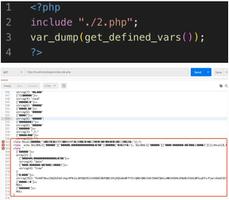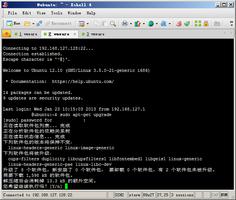bash和ksh之间的子shell差异
我一直认为,子shell程序不是子进程,而是同一进程中的另一个shell程序环境。
我使用一组基本的内置函数:
(echo "Hello";read)在另一个终端上:
ps -t pts/0 PID TTY TIME CMD
20104 pts/0 00:00:00 ksh
因此,kornShell(ksh)中没有子进程。
输入bash,使用相同的命令,其行为似乎有所不同:
PID TTY TIME CMD 3458 pts/0 00:00:00 bash
20067 pts/0 00:00:00 bash
因此,bash中的一个子进程。 通过阅读bash手册页,很明显,为子shell创建了另一个进程,但是它伪造了$$,这很时髦。
是bash和ksh之间的区别是预期的,还是我错误地理解了症状?
编辑:附加信息:strace -f在Linux上的bash和ksh上运行显示,bashclone为示例命令调用了两次(它不调用fork)。所以bash可能正在使用线程(我试过了,ltrace但它的核心转储了!)。KornShell既不叫fork,vfork也不clone。
回答:
ksh93很难避免子外壳。部分原因是避免了stdio以及sfio的广泛使用,它允许内置程序直接进行通信。另一个原因是,ksh理论上可以具有这么多的内置函数。如果使用构建SHOPT_CMDLIB_DIR,则默认情况下将包括并启用所有cmdlib内置插件。我无法提供避免使用子shell的完整列表,但通常仅在使用内置插件且没有重定向的情况下使用。
#!/usr/bin/env ksh# doCompat arr
# "arr" is an indexed array name to be assigned an index corresponding to the detected shell.
# 0 = Bash, 1 = Ksh93, 2 = mksh
function doCompat {
${1:+:} return 1
if [[ ${BASH_VERSION+_} ]]; then
shopt -s lastpipe extglob
eval "${1}[0]="
else
case "${BASH_VERSINFO[*]-${!KSH_VERSION}}" in
.sh.version)
nameref v=$1
v[1]=
if builtin pids; then
function BASHPID.get { .sh.value=$(pids -f '%(pid)d'); }
elif [[ -r /proc/self/stat ]]; then
function BASHPID.get { read -r .sh.value _ </proc/self/stat; }
else
function BASHPID.get { .sh.value=$(exec sh -c 'echo $PPID'); }
fi 2>/dev/null
;;
KSH_VERSION)
nameref "_${1}=$1"
eval "_${1}[2]="
;&
*)
if [[ ! ${BASHPID+_} ]]; then
echo 'BASHPID requires Bash, ksh93, or mksh >= R41' >&2
return 1
fi
esac
fi
}
function main {
typeset -a myShell
doCompat myShell || exit 1 # stripped-down compat function.
typeset x
print -v .sh.version
x=$(print -nv BASHPID; print -nr " $$"); print -r "$x" # comsubs are free for builtins with no redirections
_=$({ print -nv BASHPID; print -r " $$"; } >&2) # but not with a redirect
_=$({ printf '%s ' "$BASHPID" $$; } >&2); echo # nor for expansions with a redirect
_=$(printf '%s ' "$BASHPID" $$ >&2); echo # but if expansions aren't redirected, they occur in the same process.
_=${ { print -nv BASHPID; print -r " $$"; } >&2; } # However, ${ ;} is always subshell-free (obviously).
( printf '%s ' "$BASHPID" $$ ); echo # Basically the same rules apply to ( )
read -r x _ <<<$(</proc/self/stat); print -r "$x $$" # These are free in {{m,}k,z}sh. Only Bash forks for this.
printf '%s ' "$BASHPID" $$ | cat # Sadly, pipes always fork. It isn't possible to precisely mimic "printf -v".
echo
} 2>&1
main "$@"
出:
Version AJM 93v- 2013-02-2231732 31732
31735 31732
31736 31732
31732 31732
31732 31732
31732 31732
31732 31732
31738 31732
所有这些内部I /
O处理的另一个很好的结果就是一些缓冲问题就消失了。这是读取带有tee和head内置的代码行的有趣示例(请勿在任何其他shell中尝试)。
$ ksh -s <<\EOFinteger -a x
builtin head tee
printf %s\\n {1..10} |
while head -n 1 | [[ ${ { x+=("$(tee /dev/fd/{3,4})"); } 3>&1; } ]] 4>&1; do
print -r -- "${x[@]}"
done
EOF
1
0 1
2
0 1 2
3
0 1 2 3
4
0 1 2 3 4
5
0 1 2 3 4 5
6
0 1 2 3 4 5 6
7
0 1 2 3 4 5 6 7
8
0 1 2 3 4 5 6 7 8
9
0 1 2 3 4 5 6 7 8 9
10
0 1 2 3 4 5 6 7 8 9 10
以上是 bash和ksh之间的子shell差异 的全部内容, 来源链接: utcz.com/qa/402060.html








